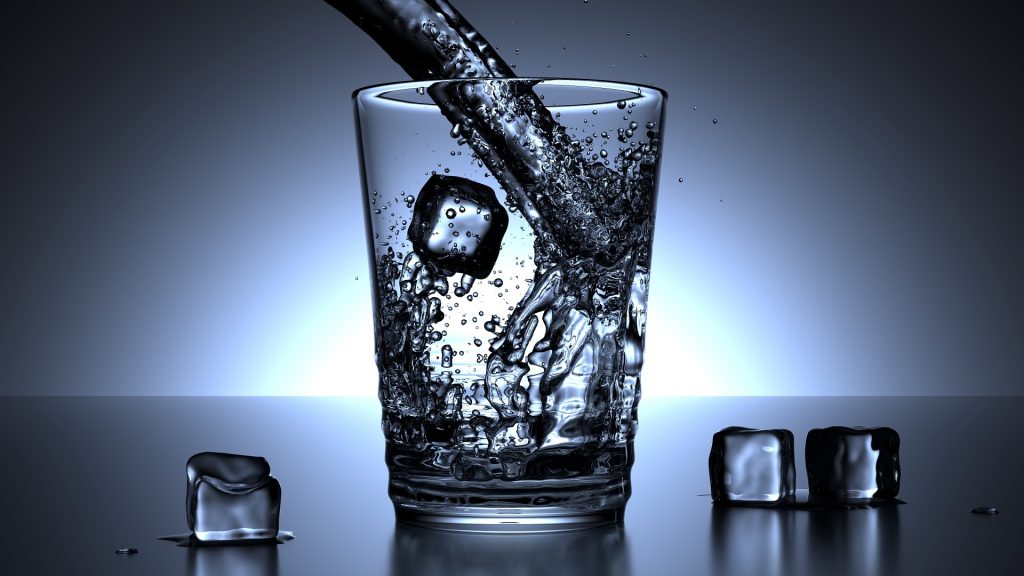 There is controversy as to the best way to rehydrate following fluid depletion. The traditional and accepted method is to consume an oral rehydration drink that is a solution of salt and glucose. This takes advantage of the active transport of glucose and sodium (in the sodium / glucose cotransporter) in the gut to facilitate an osmotic gradient that allows increased transport of water (passively) into the blood. This is the current medical treatment for dehydration and is used extensively to treat cases of cholera where intravenous treatment may not be practical or available. Rehydration is important after physical activity and a number of studies have investigated the ability of various drinks to rehydrate individuals. For example, in one study, researchers administered various drinks to subjects and then calculated the amount of fluid that was retained by the subjects based on their 2 hour urine production, in comparison to pure water. This then allowed comparison of the drink by creation of a beverage hydration index (BHI).
There is controversy as to the best way to rehydrate following fluid depletion. The traditional and accepted method is to consume an oral rehydration drink that is a solution of salt and glucose. This takes advantage of the active transport of glucose and sodium (in the sodium / glucose cotransporter) in the gut to facilitate an osmotic gradient that allows increased transport of water (passively) into the blood. This is the current medical treatment for dehydration and is used extensively to treat cases of cholera where intravenous treatment may not be practical or available. Rehydration is important after physical activity and a number of studies have investigated the ability of various drinks to rehydrate individuals. For example, in one study, researchers administered various drinks to subjects and then calculated the amount of fluid that was retained by the subjects based on their 2 hour urine production, in comparison to pure water. This then allowed comparison of the drink by creation of a beverage hydration index (BHI).

Oral rehydration drinks are traditionally seen as the gold standard method to rehydrate an individual. Not only to they allow a faster rate of water absorption due to the present of sodium and glucose in the drink, they also provide a better retention of that liquid in the short term. However, milk may provide very similar levels of water retention compared to oral rehydration therapy drinks. While this is interesting, in reality other variables are likely to be more important than the type of drink. For example, the amount of liquid drunk will have a larger influence of urine volume production compared to the type of drink. As in real World situations this amount is not standardised, it is very difficult to make recommendations about the source of the water. Often other foods will be present in the gut and this can also have a strong influence of absorption rates and water retention. Nutritionally, drinking some sort of water based liquid after physical activity will provide the vast majority of people with an adequate hydration status.
As expected, an oral rehydration therapy drink (Dioralyte) produced significantly less urine production than pure water, suggesting that more fluid had been retained by the subject. However, other drinks that also produce a lower urine production compared to water were full fat milk (Tesco) and skimmed milk (Tesco). However, a number of drinks including cola (Coca-Cola), diet cola (Diet Coca-Cola), hot tea (PG Tips), iced tea (PG Tips), coffee (Nescafe), lager (Carling), orange juice (Tesco), sparkling water (Highland Spring) and a sports drink (Powerade), did not produce significantly different urine output compared to water. The water retention caused by the oral rehydration therapy drink, full fat milk and skimmed milk were very similar (1.55, 1.50 and 1.58, respectively), suggesting that milk may have a potential use as an effective solution to maintaining optimal hydration. Consuming milk following physical activity may therefore supply both useful energy and allow optimal rehydration.
Eat Well, Stay Healthy, Protect Yourself
RdB
